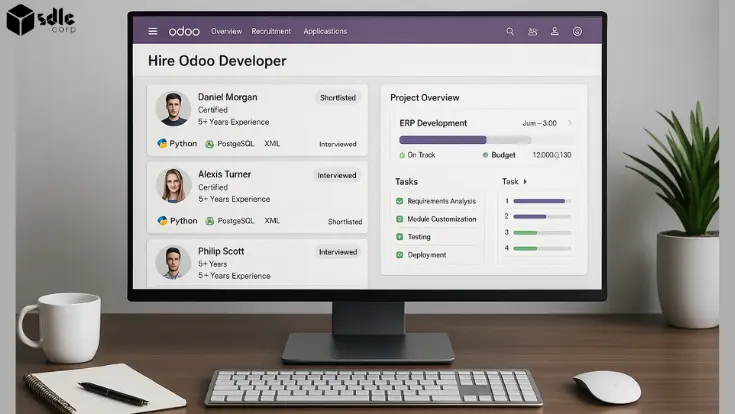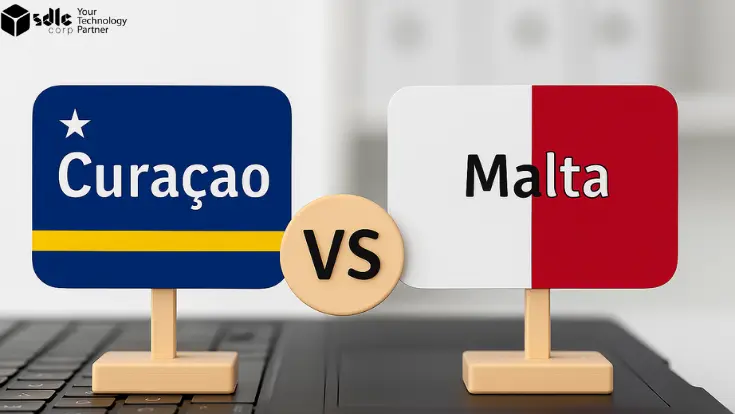Gaming has evolved from just playing games to creating, sharing, and experiencing them in dynamic virtual worlds. Roblox, a leading platform, allows users to play and create games, revolutionizing the industry with tools for building and sharing virtual experiences. If you’re looking to develop a platform like Roblox, you’ll need a solid strategy, technical expertise, and an understanding of the gaming community. This guide will walk you through the steps to create a platform that enables users to build, play, and share games, similar to Roblox.
Introduction to Roblox and Game Creation Platforms

Roblox’s Popularity:
- Allows users to create their own games using Lua, a simplified programming language.
- Provides infrastructure for hosting games and connecting players globally.
Key Features for a Similar Platform:
- Game creation tools that support multiplayer interaction.
Scalability solutions to handle a large number of users and games.
- Tools for users to share and showcase their creations.
Impact:
- Empowers both creators and players.
- Fosters a thriving, engaged community.
Step 1: Defining Your Platform’s Features

The first step in building a game platform like Roblox is defining key features:
- Game Creation Tools: Easy-to-use yet powerful tools for beginners and advanced developers, including game engines, asset creation, and scripting environments.
- Multiplayer Capabilities: A robust multiplayer architecture to ensure seamless player interaction and collaboration across the globe.
- Monetization Systems: A currency system to allow in-game purchases and enable developers to monetize their games.
- Community Interaction: Features like forums, chat systems, and leaderboards to foster player engagement and social interaction.
- Cross-Platform Support: Ensure compatibility with PCs, consoles, and mobile devices to reach a broader audience.
Step 2: Selecting the Right Game Engine for Your Roblox Clone

Building a game creation platform requires a powerful engine that supports diverse games. Roblox uses its proprietary engine, and for your platform, you’ll need one that can handle multiplayer, physics simulations, and large virtual worlds. Consider these engines:
- Unity: Popular for 3D and 2D game development, easy to learn, with strong cross-platform support.
- Unreal Engine: Known for high-quality graphics and complex game creation, though with a steeper learning curve.
- Godot: Lightweight, open-source, and customizable, ideal for small-to-medium-scale platforms, though less feature-rich than Unity or Unreal.
Choose an engine based on scalability, ease of use, and multiplayer support.
Step 3: Multiplayer Game Platform Architecture

A robust multiplayer game platform architecture is essential for a platform like Roblox. Key components include:
- Backend Infrastructure: Use cloud services (AWS, Google Cloud, Azure) to handle user authentication, matchmaking, and real-time data synchronization.
- Real-Time Networking: Ensure low-latency communication using technologies like WebSockets or WebRTC for instant data transfer between players.
- Database Management: Implement fast and efficient database systems (SQL or NoSQL) to store player data such as progress and inventory.
- Matchmaking and Lobbies: Create algorithms for efficient matchmaking and a lobby system for smooth player interaction before joining games.
Step 4: Developing the User Interface and User Experience

Once the backend and game engine are ready, focus on creating an intuitive, user-friendly interface:
- Game Creation Interface: Make it easy for users to build games with drag-and-drop features, visual scripting, and clear workflows. Provide tutorials and templates for beginners.
- Player Interface: Keep it simple for players to find games, interact with friends, and join multiplayer sessions without complications.
- Monetization Integration: Ensure easy management of in-game purchases and virtual currency, with seamless systems for avatars, premium memberships, or other monetization features.
Step 5: Community and Moderation Tools

Community engagement and moderation are key to your platform’s success:
- Social Interaction: Add features like in-game chat, forums, and social media integration. Include player-driven events, competitions, and challenges to boost interaction.
- Moderation: Implement automated tools, human moderators, and reporting systems to protect users, especially minors, from inappropriate content and behavior.
- User Feedback: Collect feedback via surveys, forums, and in-app options to continuously improve the platform and create a more welcoming environment.
Step 6: Launching and Marketing Your Platform

Once your platform is ready, focus on launching and marketing:
- Beta Testing: Conduct a closed beta with a small group of users to gather feedback and fix issues before the official launch.
- Influencer Partnerships: Collaborate with gaming influencers to promote your platform and attract early users.
- Social Media and Ads: Use social media and targeted ads to raise awareness and share updates, game highlights, and achievements.
- Community Building: Create a strong community through forums, social media, and live events to encourage organic growth.
Conclusion
Developing a gaming platform like Roblox is a complex and ambitious undertaking. However, with the right tools, architecture, and a focus on community engagement, it’s possible to create a platform that resonates with both game creators and players. By selecting the right game engine, implementing a robust multiplayer architecture, providing user-friendly interfaces, and focusing on moderation and feedback tools, you can build a platform that offers an immersive and enjoyable experience for all users. With patience, planning, and the right development approach, your vision of creating a platform like Roblox can become a reality—with SDLC Corp as your trusted partner.
FAQ's
1. What Are the Key Features I Should Focus on When Developing a Gaming Platform Like Roblox?
Focus on these core features:
- Game Creation Tools: Easy-to-use tools for both beginners and advanced developers.
- Multiplayer Capabilities: Robust infrastructure for seamless player interaction.
- Monetization Systems: Enable in-game purchases and allow developers to monetize their games.
- Community Interaction: Features like forums, chat systems, and leaderboards.
- Cross-Platform Support: Compatibility with PCs, consoles, and mobile devices.
2. How Do I Select the Right Game Engine for My Platform?
The game engine should support multiplayer, physics simulations, and large virtual worlds. Consider:
- Unity: Great for 3D/2D games, cross-platform, easy to learn.
- Unreal Engine: Known for high-quality graphics, but steeper learning curve.
- Godot: Lightweight, open-source, and ideal for small-to-medium projects.
3. How Important is Multiplayer Architecture for My Platform?
Multiplayer architecture is vital for real-time player interaction. It includes:
- Low-latency communication: Ensures smooth gameplay using technologies like WebSockets.
- Backend infrastructure: Handles user authentication, matchmaking, and data synchronization.
- Database management: Stores player progress, inventory, and other data efficiently.
4. How Do I Launch and Market My Platform?
To successfully launch:
- Beta Testing: Conduct a closed beta with a small group to gather feedback.
- Influencer Partnerships: Collaborate with gaming influencers to showcase your platform.
- Social Media and Ads: Use targeted ads and share regular updates to engage users.
5. How Do I Ensure Community Engagement and Moderation?
- Social Interaction: Enable in-game chat, forums, and events to boost interaction.
- Moderation: Implement automated tools, human moderators, and reporting systems to protect users.
- User Feedback: Collect feedback via surveys and in-app options to continuously improve the platform.

















